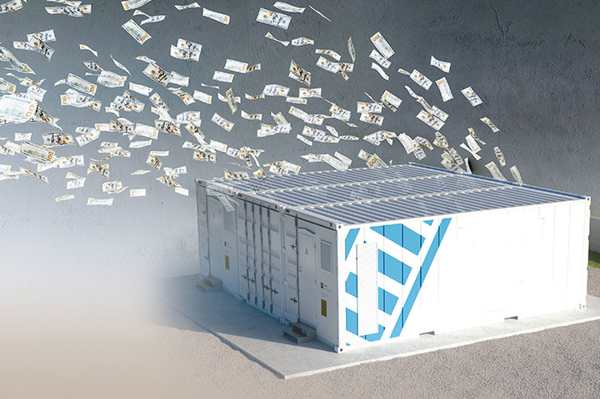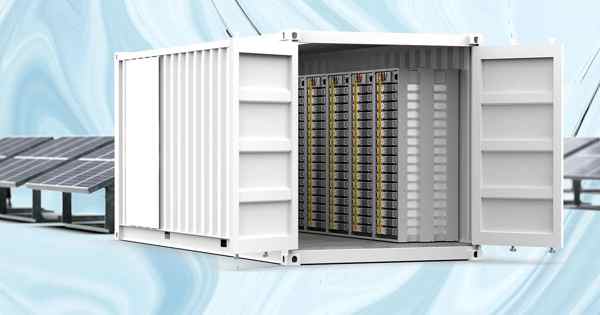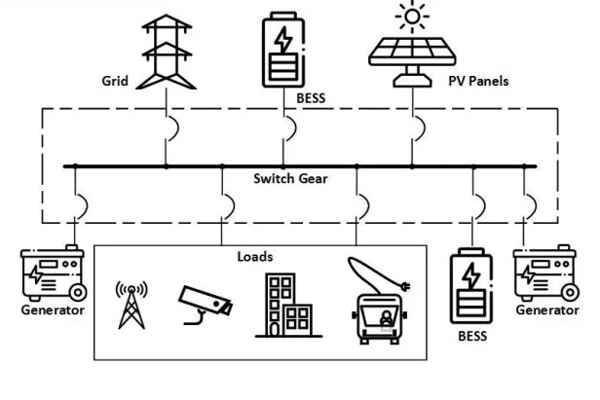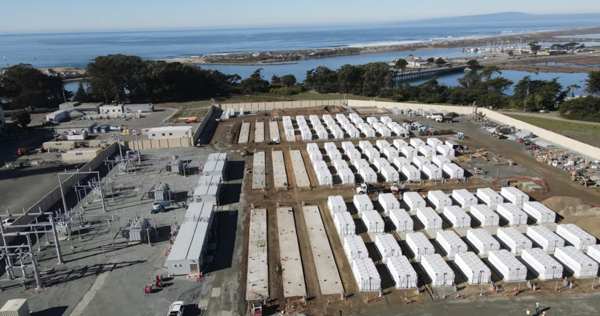贝丝在电池中意味着什么?
随着世界转向可再生能源和更大的电网弹性, 您可能会听到首字母缩写“贝斯" 越来越多. 贝丝在电池的背景下是什么意思, 这只是一个大电池的另一个名字, 或更多? 了解这个术语是导航现代能源存储世界的关键.
在能源部门, 贝斯代表电池储能系统. 至关重要的是要了解贝斯不仅是电池本身; 这是整个, 包括电池模块的集成系统, 重要的电池管理系统 (电池管理系统), 电源转换系统 (PC或逆变器), 控制软件, 以及所有必要的安全组件. 将电池视为油箱, 但是贝丝是完整的, 智能发动机准备存储和发电.

在 吉克斯太阳能, 我们专门提供这些完整的Bess解决方案. 当客户需要储能时, 我们不只是给他们电池; 我们设计了一个全面的系统,所有零件都可以和谐地工作以提供安全, 可靠的, 和有效的力量. 让我们探索需要什么.
贝斯的缺点是什么?
电池储能系统提供了令人难以置信的好处, 但是像任何主要技术一样, 在进行投资之前,保持平衡的看法并了解其潜在的缺点很重要. 所以, 考虑什么弊端?
贝丝的主要缺点是 大量前期资本成本, 它是 有限的运营寿命 随着所有电池随着时间的推移降低, 往返效率损失 (在充电和排放期间损失了一小部分能量), 这 物理空间 安装所需, 和 环境考虑 与制造和寿命终止回收有关. 然而, 现代技术, 特别是使用磷酸锂的系统 (磷酸铁锂) 电池, 不断改进以应对这些挑战, 增强长期价值和可持续性.

深入潜水: 对贝丝挑战的现实看待
让我们分解这些潜在的缺点:
- 高前期成本: 贝斯是一项重大投资. 电池的成本, 高质量的逆变器, 安全组件, 和专业安装加起来.
- 我们的观点: 虽然初始成本是关键因素, 我们鼓励客户查看存储的水平化成本 (LCO) 和长期价值. 贝斯可以大大减少电费 (特别是与太阳能配对时), 提供宝贵的备份功率, 和对冲上涨的能源价格. 诸如联邦投资税收抵免等激励措施 (国贸中心) 在美国. 也大大降低净成本.
- 有限的寿命 & 降解: 贝斯的电池组件不会永远持续. 它每年损失少量的容量,并且每个充电/放电周期都会失去.
- 我们的观点: 在这里,选择合适的技术至关重要. 我们优先考虑LFP电池, 寿命很长 (接下来的更多), 我们设计系统,因此不会不必要地压力, 最大化他们的服务寿命. A 10+ 现在的寿命现在是优质LFP Bess的标准.
- 往返效率损失: 你不出去 100% 您投入的能量. 有些人当热量失去.
- 我们的观点: 现代锂离子贝丝高效, 往返效率通常在 85% 和 95%. 虽然不完美, 这比较旧的存储技术要好得多. 我们使用高效率逆变器和组件来最大程度地减少这些损失.
- 物理足迹: 贝斯单元需要专用的物理空间, 对于较小的房屋或企业来说,这可能是一个考虑因素.
- 我们的观点: 壁挂式电池和紧凑型机架安装系统等现代设计非常高效. 我们与客户合作,找到安全的最佳位置, 合规, 和最少的侵入性.
- 环境/回收问题: 电池制造具有环境足迹, 回收锂离子电池是一个发展中的行业.
- 我们的观点: 我们喜欢LFP化学, 避免使用钴, 具有重大道德和环境问题的矿物. 我们还支持并了解电池回收行业不断增长, 鼓励负责任的临终管理.
Bess电池的寿命是多少?
考虑贝斯时, 它的寿命是确定其整体价值的关键因素. 您可以在这些高级系统之一的电池中期望有多少年的可靠服务?
现代贝斯中的电池组件, 通常使用 磷酸铁锂 (铁磷酸锂) 化学, 专为长期运营生活而设计. 您通常可以期待 日历寿命 10 到 20 年 和 循环寿命从 3,000 结束 6,000 全电荷止血周期. 保证这种表演, 大多数知名的贝丝制造商提供 10-年保修 这确保电池将保留很大一部分 (例如, 70%) 服务十年后的原始能力.

深入潜水: Bess寿命的钥匙
有几个因素导致了精心设计的贝斯的长寿:
- 上级化学 (磷酸铁锂): 正如我们讨论的, LFP在化学上比其他常见的锂离子(如NMC)更稳定和健壮. 这使其非常适合在太阳能储能应用中所需的日常骑自行车. 每天循环一次的电池 15 几年将经历 5,475 周期, 高质量的LFP电池可处理的数字.
- 智能BMS: 电池管理系统至关重要. 它充当监护人, 防止电池在其安全限制之外运行 (温度, 电压, 当前的) 并确保其所有内部细胞保持平衡. 这种保护大大减轻了压力并延长了电池的寿命.
- 适当的系统尺寸: 适合房屋或企业负载适当尺寸的系统,意味着电池并不经常被推到其绝对极限 (最大排放率或 100% 放电深度), 随着时间的推移降低磨损.
- 热管理: 贝丝围墙及其冷却系统 (被动或主动) 旨在将电池保持在其理想的工作温度范围内. 这在新加坡等温暖的气候中尤其重要, 由于热量是电池寿命的主要敌人.
GYCX太阳能故事: “我们总是告诉我们的客户,BES是长期的能源资产. 当我们安装带有LFP电池和10年保修的系统时, 我们为他们提供了十年或更多可预测的能源节省和安全性, 这使初始投资更加清晰。"
UPS和Bess有什么区别?
您可能会听到“ UPS" 和“贝丝" 并认为它们只是说“备份力量的两种方式”。" 两种系统都使用电池在电网下降时提供电源, 他们的主要目的, 规模, 持续时间大不相同.
A UPS (不间断电源供应) 通常设计用于提供 短期, 清洁电源 (通常几分钟) 允许敏感的电子设备等计算机和服务器在中断期间优雅地关闭. A 贝斯 (电池储能系统), 另一方面, 是一个设计的更大的系统 长期能源管理, 能够为基本电路甚至整个房屋供电多个小时或几天, 并明智地从太阳能等来源管理能源.

深入潜水: 两个电池系统的故事
让我们比较它们:
| 特征 | 不间断电源供应 (UPS) | 电池储能系统 (贝斯) |
|---|---|---|
| 主要目标 | 保护电子免受故障; 允许安全关闭. | 提供长期功能; 存储太阳能; 管理能源成本. |
| 运行时 | 分钟 (通常 5-30 分钟). | 小时到几天. |
| 容量 | 用VA或瓦特测量 (例如, 1500VA / 900瓦). 低kwh. | 以kWh为单位 (例如, 10千瓦时, 20千瓦时, 或更多). |
| 尺寸 | 小的, 台式机或机架装置. | 大型设备, 壁挂装置, 内阁, 甚至运输集装箱尺寸. |
| 一体化 | 简单的插件设备. | 专业安装并集成到建筑物的电气系统中. |
| 技术 | 通常使用密封的铅酸电池. | 几乎总是使用高级锂离子 (磷酸铁锂) 电池. |
| 主要用途 | 保护IT设备 (电脑, 服务器, 网络装备). | 全家备份, 太阳自我消费, 离网生活, 调峰. |
简而言之, 一个UPS就像您的数据的救生筏, 给您足够的时间来安全. 贝斯就像你自己的私人岛, 让您长期舒适,自给自足. 在GYCX太阳能, 我们专注于提供这些“私人岛屿" 真正的能源弹性解决方案.
什么是世界上最大的电池存储?
我们已经谈论过房屋和企业的贝斯, 但是这项技术能有多大? 了解其全部潜力, 看到正在改变世界各地电力网格的庞大的网格级项目,这是令人着迷的.
截至早期到中 2025, 中的一个 世界上最大的操作电池储能系统仍然是苔藓着陆储能设施 在蒙特雷县, 加利福尼亚. 这个巨大的贝斯, 由Vistra Energy运营, 具有运营能力 750 兆瓦 (兆瓦) 和 3,000 兆瓦小时 (兆瓦时). 这个巨大的量表的项目展示了贝斯技术支持整个电网并整合大量可再生能源的能力.

深入潜水: 网格级存储的规模
什么是 750 兆瓦 / 3,000 像苔藓降落一样的MWH Bess实际上?
- 扩展视角:
- 力量 (兆瓦): 750 兆瓦足以大致供应 560,000 房屋.
- 活力 (兆瓦时): 3,000 兆瓦时小时是它可以存储的总能量. (记住, 1 MWH = 1,000 千瓦时). 典型的房屋可能会使用 25-30 每天千瓦时, 所以 3,000 MWH等同于每日用电 100,000 房屋. 这个贝斯可以全部排放 750 兆瓦 4 连续数小时 (750 MW X 4H = 3,000 兆瓦时).
- 网格规模的贝斯的目的:
- 存储可再生能源: 这些巨大的电池存储了多余的太阳能和在一天中间或大风夜产生的风能,然后在晚上的高峰需求期间将其送回电网.
- 网格稳定性: 他们可以以毫秒的响应来稳定电网的频率和电压, 防止停电和提高电源质量.
- 取代“峰值”" 植物: 他们越来越替代效率低下和污染天然气的峰值" 传统上被开除以满足高需求的植物每天仅几个小时.
- 技术: 这些设施包括数百个大型, 容器大小的外壳, 每个装满电池模块及其相关的BMS架, 热管理, 和安全系统. 这些容器连接到大型电源转换系统 (件) 然后到达高压电网.
诸如Moss Landing之类的令人难以置信的项目表明,我们在GYCX太阳能中使用的同一基本的BESS技术可用于单个房屋或企业, 可靠的, 并且足以为整个城市供电. 它是全球过渡到清洁能源未来的核心.
所以, 贝丝是什么意思? 这意味着完整, 智能系统可以控制您的能量. 尽管有成本和寿命等考虑因素, 现代LFP Bess技术提供了安全的, 持久, 和强大的解决方案. 从您家中的一个壁挂装置到大量的网格稳定设施, 贝斯1. 是解开可再生能源的全部潜力并确保弹性电源的关键.
如果您对Bess如何适应您的能源计划感兴趣, 我们的GYCX太阳能团队具有为您设计解决方案的专业知识. 立即与我们联系以了解有关我们的电池储能产品的更多信息.
了解BES的概念,以便您可以更好地比较和理解与电池相关的数据概念. 这将帮助您选择最适合我们公司需求的产品. ↩
